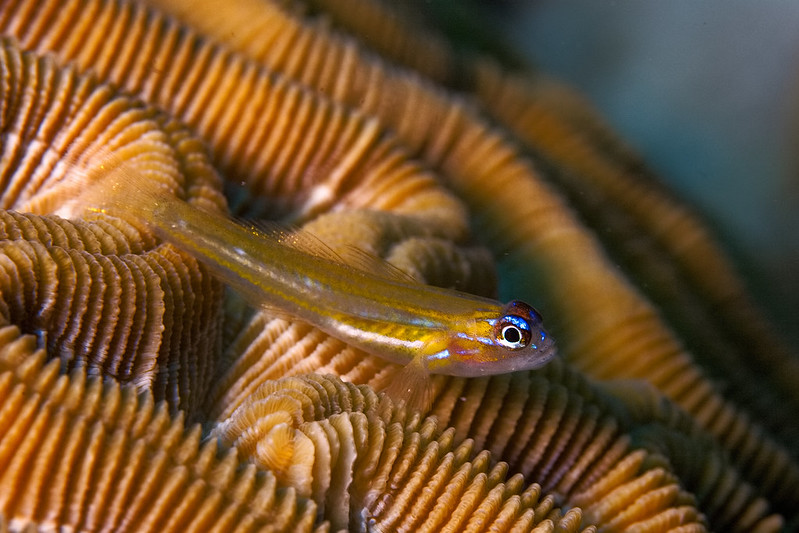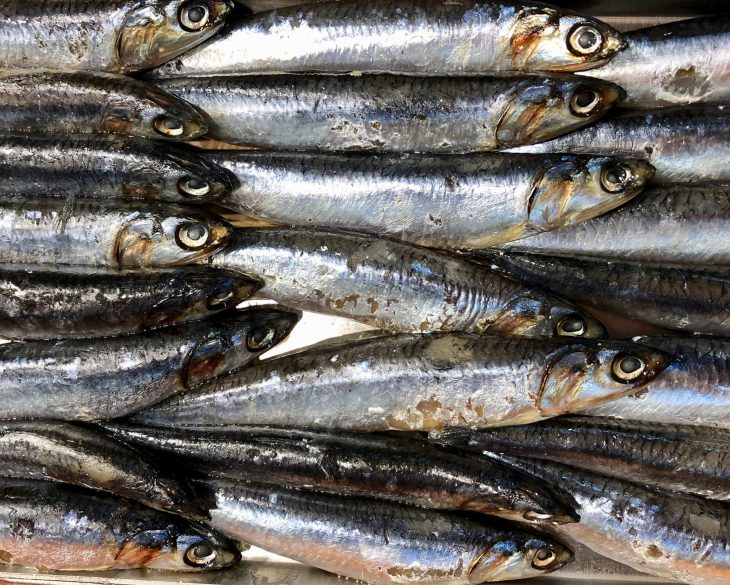In recent years, the oceans have been getting noticeably warmer. Many scientists think that warmer water is a more favorable environment for smaller fish than larger ones, because warmer water holds less oxygen and bigger fish need more oxygen to live. This is predicted to lead to smaller fish in the ocean over time. But do fish shrink or do little fish become more common?
Anchovies are among the small number of ocean fish consumed in large amounts by people. They are familiar as pizza toppings or salad dressing ingredients, but they are also ground up for livestock and pet food. Anchovies are easy to harvest because they gather in enormous schools in predictable places. One such place is the Humboldt current, an oceanic current off the coast of Chile and Peru that brings cold water towards the equator from the Antarctic Ocean.
The Humboldt current alternates between warm and cool based on global weather patterns. When the Humboldt current is warmer, fishermen catch fewer anchovies, which gives scientists an idea of what could happen if the current stays at those warmer temperatures. There is less oxygen and food available for anchovies in warmer waters, so the fish travel to deeper, colder waters that fishermen can’t reach. Fish that have adapted to low oxygen levels, such as gobies, are more common in warmer waters. Gobies are harder to catch than anchovies since they are smaller, and they give less meat per fish.
A group of international researchers led by Renato Salvatecci wanted to know if anchovies were smaller when the oceans were warmer. They knew that around 120,000 years ago, the Humboldt current was warmer than it is today. They took samples from the sediment at the bottom of the Humboldt current at a depth that would contain remains of animals that lived 120,000 years ago. They then combed through the samples, looking for ancient fish vertebrae amongst the bones and shells. They measured the width of each vertebrae and sorted them into gobies, anchovies, lanternfish, and other species.
To come up with an accurate model for the ocean, the researchers needed both present and past ocean temperatures. To get past temperatures, they tested for specific molecules left behind by certain species of algae that don’t break down for thousands of years, even long after the algae cells decompose. When the water is warm, algae create dense clusters of cells called blooms, making these molecules more abundant.

A goby species similar to the one studied. Photo by laszlo-photo. CC BY 2.0
They knew from previous studies that different amounts of algae correspond to certain temperatures. So, scientists can use that data to estimate what the temperature was at the time of a given layer of ocean sediment based on the amount of algal molecules found.
Next, the scientists used the algae-based temperature estimates to figure out which fish bones came from warmer and cooler periods. They found that during warm periods, about 60% of the samples were goby vertebrae, and there were very few anchovy vertebrae. Today, however, that area is currently dominated by anchovies.
When the scientists combined all the vertebrae of all the fish species together, the average size of the ancient fish vertebrae was smaller than the modern vertebrae. However, the anchovy bones they found were around the same size as current anchovies. The smaller average size in the past was because there were many more vertebrae from smaller fish, bringing the average down. This finding supports the hypothesis that smaller fish are more common when the ocean is warmer, instead of the idea that fish will shrink in size as waters get warmer.
Even though anchovies will likely stay the same size in the future, this study shows that the type of fish found in the Humboldt current will probably change if the water continues to warm. Based on the results of this study, fish that require high levels of oxygen, like anchovies, may not be able to maintain their current high population when the oxygen decreases due to higher temperatures. If the Humboldt current becomes dominated by gobies again, the people, fisheries, and industries that rely on anchovies will have trouble catching enough.
This study demonstrated, along with others of its kind, that ocean warming can affect our food supply. This is especially important to know for regions of the world that are dependent on seafood as their main protein source. Some of these impacts won’t be immediately obvious, which is why scientists use models based on Earth’s past. Models are never perfect and need to be refined when scientists discover new information, but they are still helpful in shining some light on the unknown future.


